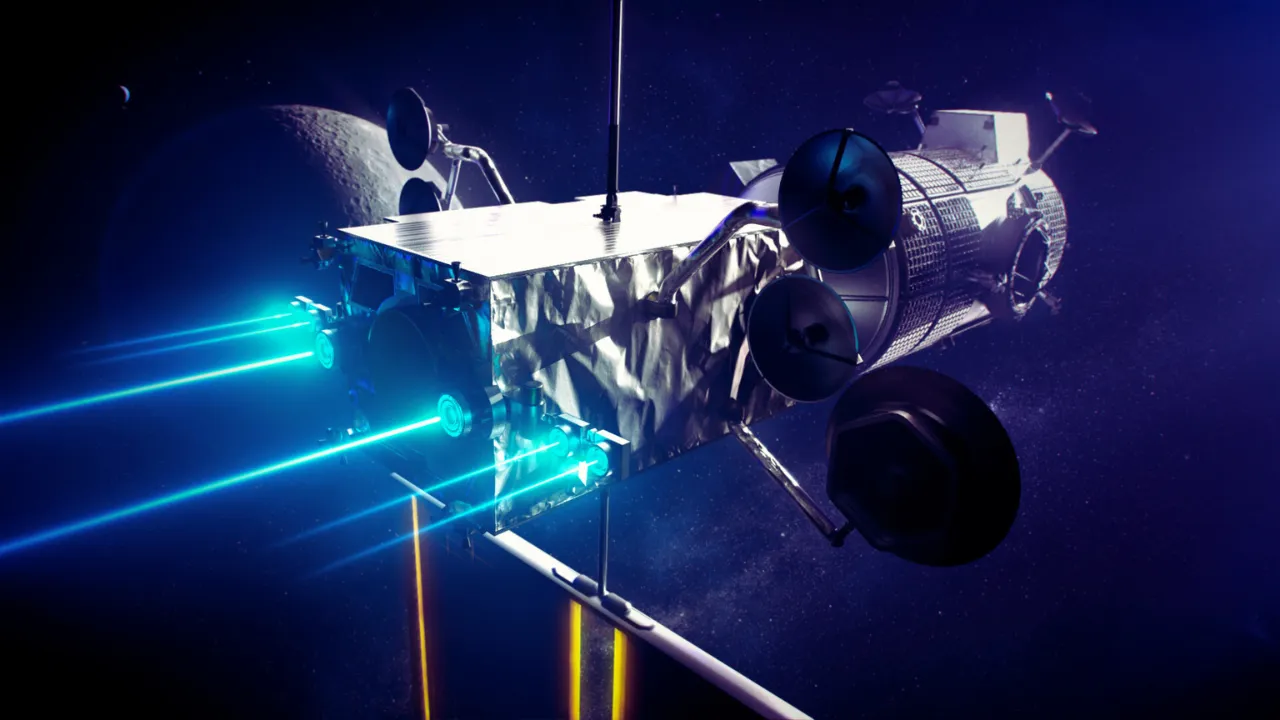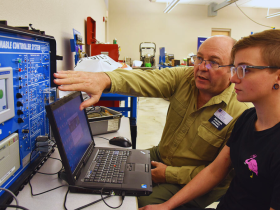As one of the most influential publications in the propulsion science domain, the Journal of Propulsion Technology Research 2025 continues to uphold its reputation for scholarly excellence. The journal focuses on groundbreaking advancements that define the trajectory of propulsion systems used across aerospace, defense, and sustainable energy platforms. It acts as a collaborative space where researchers, engineers, and academics come together to present peer-reviewed findings that address global challenges and technological demands in propulsion.
In 2025, the journal strengthens its commitment to innovation by showcasing studies on next-generation propulsion systems, hybrid and electric propulsion integration, combustion optimization, and fuel efficiency. Articles published in this edition emphasize both theoretical modeling and real-world engineering applications, fostering a critical connection between academic knowledge and industry execution. The journal also emphasizes interdisciplinary collaboration, reflecting the rapidly evolving nature of propulsion research and its widespread impact across related scientific fields.
Core Topics Covered in 2025 Edition of the Journal
The 2025 edition of the Journal of Propulsion Technology Research highlights a wide array of contemporary themes in propulsion science. Areas include electric and hybrid propulsion systems, advanced combustion modeling, and fuel efficiency optimization. Research on green propulsion alternatives such as hydrogen and biofuels also gains prominence. Computational fluid dynamics and thermal analysis techniques are in-depth, supporting innovation in engine design.
The journal further covers thrust vector control, noise reduction mechanisms, and lightweight materials integration. Space propulsion technologies, including ion thrusters and plasma engines, receive detailed attention. These topics collectively push the boundaries of what’s possible in modern propulsion engineering.
| Research Area | Description |
| Rocket Propulsion Systems | Advanced rocket engine designs, performance simulations |
| Air-Breathing Engines | Turbojet, ramjet, and scramjet propulsion developments |
| Green Propulsion | Eco-friendly fuel alternatives, emission reduction methods |
| Electric Propulsion | Ion thrusters, Hall effect thrusters, and plasma systems |
| Propulsion System Modeling | CFD tools, thermodynamic analysis, and system optimization |
Current Trends in Propulsion Research
One of the standout themes in the 2025 editions is the increasing shift toward sustainable propulsion technologies. Research papers have placed strong emphasis on hydrogen-based fuels, bio-propellants, and electric propulsion systems. These alternatives are not only efficient but also significantly reduce carbon footprints. Furthermore, the use of hybrid propulsion that combines chemical and electric thrust capabilities is gaining traction across research groups worldwide. By focusing on innovative engine designs and cross-disciplinary methods, the journal is laying the foundation for the future of low-emission aviation and space exploration.
Advances in Computational Fluid Dynamics (CFD) in 2025
Simulation tools have revolutionized how propulsion systems are analyzed and refined in modern research. The Journal of Propulsion Technology Research 2025 includes multiple papers that focus on breakthroughs in computational fluid dynamics (CFD) modeling. These high-fidelity simulations enable precise predictions for turbulent flow behavior, combustion chamber dynamics, and nozzle performance metrics.
Advances in machine learning algorithms now support real-time optimization and adaptive design processes. Automated mesh generation techniques also streamline the setup of complex geometries. Researchers can now test various design scenarios with reduced physical prototyping. This not only accelerates development cycles but also enhances performance tuning. Such digital tools are reshaping propulsion system innovation with greater accuracy and speed.
| Technology Type | Application Area | Highlights |
| Hybrid Rocket Motors | Space Launch Vehicles | Dual-mode solid-liquid performance |
| Plasma Propulsion | Deep-Space Missions | Low fuel mass, high endurance |
| Bio-Fuel Engines | Commercial Aviation | Reduced emissions, stable thrust |
| Turbomachinery Advances | Jet Engines | Noise reduction, better fuel ratio |
| Smart Nozzle Designs | Military Aircraft | Adaptive control, stealth boost |
Notable Contributors and Research Institutions
Several renowned institutions have made a mark in the 2025 journal volumes. NASA, ISRO, the European Space Agency, and top universities like MIT, Stanford, and TU Delft are contributing groundbreaking studies. Cross-border collaborations have also become more prominent, reflecting the global nature of propulsion challenges. The journal regularly features international projects, joint test flights, and shared data models, reinforcing its status as a global academic cornerstone.
Future Propulsion Concepts Published in 2025
The 2025 editions of the Journal of Propulsion Technology Research feature bold, theoretical research exploring futuristic propulsion concepts. Topics include antimatter propulsion, laser-driven thrust systems, and nuclear thermal engines—technologies still far from commercial use but rich in potential. These speculative studies lay the groundwork for breakthroughs in deep-space travel and high-efficiency energy use.
By offering a peer-reviewed platform, the journal helps legitimize early-stage ideas and promotes academic dialogue. It also opens pathways for long-term funding and experimental exploration. Such visionary content reflects the journal’s role in expanding the boundaries of propulsion science. Even untested concepts gain momentum through scholarly attention and structured debate.
Editorial Process and Submission Guidelines
The editorial board of the journal maintains rigorous review standards to ensure the integrity and quality of published content. Each submission undergoes multiple layers of peer review by experts in propulsion, thermodynamics, materials science, and aerodynamics. Authors are encouraged to follow structured templates that highlight objectives, methodology, simulation results, and real-world applications. The acceptance rate is competitive, reflecting the journal’s dedication to publishing only impactful research.
Integration of AI and Machine Learning in Propulsion
In 2025, artificial intelligence will have a significant impact on the development of propulsion systems. The Journal of Propulsion Technology Research showcases papers where AI is used for design optimization, fault detection, and adaptive performance control. Reinforcement learning algorithms help adjust thrust output in real-time based on changing flight conditions.
Neural networks trained on historical operational data are being deployed to predict engine fatigue and prevent failures. These tools support smarter maintenance planning and improve overall reliability. AI integration is enabling propulsion systems to self-monitor and self-adjust, leading to safer and more efficient operations. This marks a shift toward intelligent, data-driven propulsion technologies.
Educational Applications and University Participation
The Journal of Propulsion Technology is widely used as reference material in higher education programs in aerospace and mechanical engineering. Universities across the globe utilize the journal for coursework, research projects, and graduate thesis development. The inclusion of student research papers in 2025 demonstrates the journal’s support for emerging scholars. This not only encourages participation but also helps institutions benchmark their academic standards.
Contribution Toward Sustainable Development Goals (SDGs)
The propulsion research showcased in the 2025 editions aligns with global goals like sustainable infrastructure (SDG 9), climate action (SDG 13), and affordable clean energy (SDG 7). By featuring green technologies and energy-efficient systems, the journal supports worldwide efforts toward reducing environmental impacts. It also drives policy-level awareness, leading to greater research funding and collaboration.
Wrapping up
The Journal of Propulsion Technology Research 2025 continues to be an authoritative voice in the global propulsion research community. It brings together engineers, scholars, and innovators who drive technological evolution across aerospace, energy, and defense applications. By curating high-quality research on sustainable fuels, advanced combustion techniques, and hybrid propulsion systems, the journal helps steer the future of energy-efficient mobility.
Its focus on experimental and computational advancements ensures relevance to both academic and industry-driven audiences. Contributions featured in 2025 reflect a commitment to cleaner, smarter, and more powerful propulsion technologies. The journal not only supports the dissemination of pioneering research but also facilitates policy discussions and industrial implementation strategies.
FAQs
What subjects are typically published in the Journal of Propulsion Technology?
The journal publishes a diverse range of topics, including rocket propulsion, scramjet and ramjet technologies, hybrid-electric engine systems, and sustainable bio-fuel developments. It also focuses on advanced computational fluid dynamics (CFD), AI-driven modeling, and real-world propulsion testing. Papers often connect theory with application in aerospace, defense, and energy industries.
How do researchers submit papers to the journal?
Researchers can submit manuscripts through the official portal of the Journal of Propulsion Technology. The submission process requires adherence to formatting guidelines, originality checks, and reference standards. Each paper undergoes a double-blind peer-review process that includes expert feedback and mandatory revisions. Authors are expected to submit high-quality graphics, datasets, and proofs for evaluation.
Is the Journal of Propulsion Technology peer-reviewed?
Yes, the journal is strictly peer-reviewed to maintain academic credibility and technical accuracy. All articles are evaluated by subject-matter experts, ensuring that each submission meets high standards of innovation, clarity, and relevance. The process involves multiple stages, including editorial screening, double-blind review, and detailed revision rounds. Reviewers assess everything from methodology and data analysis to conclusion strength.
Are student papers accepted in the journal?
Graduate and doctoral students who have conducted worthwhile research are encouraged to submit to the journal. Students can contribute original findings, experimental results, or theoretical advancements. Their submissions undergo the same peer-review process as seasoned researchers, ensuring academic fairness. Publishing in this journal helps students build credibility and receive international recognition.
What makes the 2025 edition stand out?
The 2025 edition brings expanded focus on eco-friendly propulsion technologies, AI-enhanced engine control, and futuristic models like nuclear thermal propulsion. It features research collaborations across global institutions and presents real-world case studies from leading aerospace labs. Visually-rich data, automated design workflows, and simulations of space-grade engines are highlights this year.
How does the journal support real-world engineering applications?
The journal bridges theoretical research with practical engineering applications by publishing case studies, test data, and validated simulations. Articles often include into engine prototyping, material stress analysis, and field deployment. Researchers and engineers use this platform to share performance results from wind tunnel testing and space mission trials.
What future trends are being discussed in the 2025 volumes?
Topics gaining traction in the 2025 issues include AI-powered engine diagnostics, reusable propulsion systems, and quantum-based thrust models. Research on reducing carbon footprints through advanced biofuels and hydrogen combustion is also prominent. There’s rising interest in smart materials, noise reduction technologies, and miniaturized thrusters for nano-satellites.




